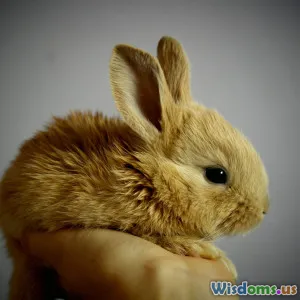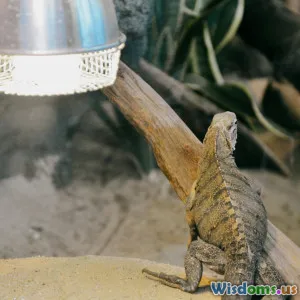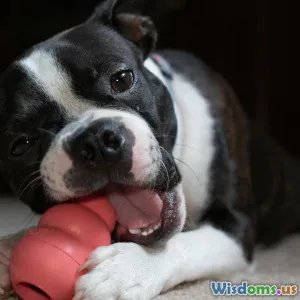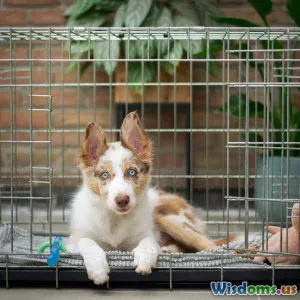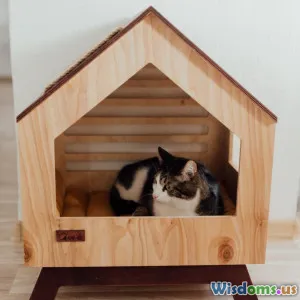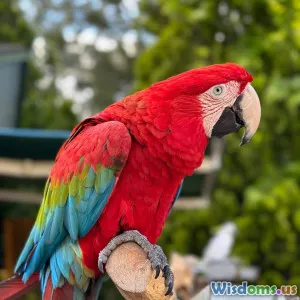
Why Do Parrots Pluck Their Feathers and How Can You Prevent It
7 min read Discover why parrots pluck their feathers and effective strategies to prevent this harmful behavior. (0 Reviews)
Why Do Parrots Pluck Their Feathers and How Can You Prevent It
Feather plucking in parrots is a perplexing and often heartbreaking issue for avian enthusiasts. Imagine your vibrant, lively pet suddenly beginning to pull out its feathers, leaving bald patches and potentially injuring itself. This behavior is not just a cosmetic concern but signals deep-rooted physical or emotional distress. Let's explore the reasons behind this perplexing habit and effective measures to prevent it.
Understanding Feather Plucking: More Than Just a Habit
Feather plucking, or psychogenic feather picking, is a common but serious problem among captive parrots. It involves the deliberate removal of feathers by the bird and can lead to pain, skin infections, and social isolation. According to a 2013 study published in the Journal of Avian Medicine and Surgery, up to 10% of pet parrots may engage in some form of self-plucking.
Why Do Parrots Pluck Their Feathers?
1. Medical Causes
Before considering behavioral reasons, health issues must be ruled out:
- Skin infections and parasites: Mites or fungal infections can irritate the skin, prompting the bird to pull feathers for relief.
- Nutritional deficiencies: Lack of essential vitamins like A, E, or fatty acids can affect feather quality and skin health.
- Allergies: Environmental allergens like dust or mold.
- Pain or discomfort: Internal illnesses causing discomfort.
Veterinarians emphasize a thorough medical workup for any parrot exhibiting feather-plucking behaviors to identify treatable causes early.
2. Psychological and Environmental Factors
When medical issues are ruled out, behavioral factors come into focus:
- Stress and Anxiety: Parrots are intelligent, social animals. Loneliness, fear, or environmental changes can cause stress.
- Boredom: Lack of mental stimulation and physical activity triggers self-destructive behaviors.
- Overgrooming Habit: Parrots might pluck feathers as a displacement activity, akin to nail-biting in humans.
Dr. Susan O'Donnell, an avian vet, states, "Feather plucking is often a signal that a parrot isn’t getting its emotional or environmental needs met."
3. Social Isolation
In the wild, parrots live in complex social communities. Isolation can lead to severe psychological distress. Some studies suggest that parrots deprived of social interaction may develop stereotypies, including feather plucking.
How Can You Prevent Feather Plucking?
1. Regular Veterinary Care
Routine check-ups help spot underlying health problems early. Comprehensive blood panels, skin scrapings, and parasite checks can identify issues before self-plucking starts.
2. Create a Stimulating Environment
- Toys and Enrichment: Rotating a variety of toys and puzzles prevents boredom. Foraging toys engage natural behaviors.
- Physical Activity: Providing space for flight or play encourages exercise and reduces frustration.
- Visual and Auditory Stimulation: Parrots enjoy music, nature videos, or the company of household members.
In one case study documented by an avian behaviorist, a cockatoo ceased plucking after introduction of daily play sessions and a vibrantly enriched cage setup.
3. Social Interaction
- Spend quality time daily to satisfy a parrot’s social needs.
- Consider acquiring companion birds where appropriate, ensuring compatibility.
4. Diet and Nutrition
Balanced diets rich in fresh fruits, vegetables, and formulated pellets support feather health. Avoid excessive seeds which lack vital nutrients.
5. Addressing Stress Triggers
Identify environmental stressors such as loud noises, abrupt temperature changes, or aggressive pets, and minimize exposure.
6. Behavior Modification and Professional Help
- Consultation with avian behaviorists
- Use of positive reinforcement to redirect plucking impulses
- In some cases, medication under vet supervision
7. Avoid Physical Barriers as Primary Solutions
Though collars or vests can prevent feather removal, they don’t address root causes and may exacerbate stress.
Real-World Insights
For example, "Paco," an African Grey parrot, began plucking after owners remodeled the living room, disturbing his routine and increasing noise levels. Once the environment was stabilized and Paco had more cage toys, his feather condition improved significantly.
Conclusion
Feather plucking in parrots is a multifaceted issue with medical, psychological, and environmental causes. Prompt veterinary diagnosis combined with enriching care, social interaction, and diet adjustments can prevent and often reverse this destructive behavior. As responsible caretakers, understanding the nuanced needs of parrots helps us foster healthier, happier lives for these intelligent companions.
If you notice your parrot plucking feathers, don't ignore it—seek veterinary advice and evaluate the bird’s environment and emotional well-being. Prevention starts with awareness, empathy, and proactive care.
By tackling the root causes, we can ensure our feathered friends maintain their beautiful, natural plumage and thrive in our homes.
References:
- Clubb, S.L., & Mayer, J. (2013). "Feather Plucking in Psittacine Birds." Journal of Avian Medicine and Surgery, 27(2), 94–105.
- O'Donnell, S. "Psychogenic Feather Plucking in Parrots: Causes and Management." Avian Veterinary Journal, 2017.
- McKeown, D., & colleagues. "Environmental Enrichment Techniques and Their Effects on Avian Behavior". Avian Behavior Science, 2019.
Rate the Post
User Reviews
Popular Posts











